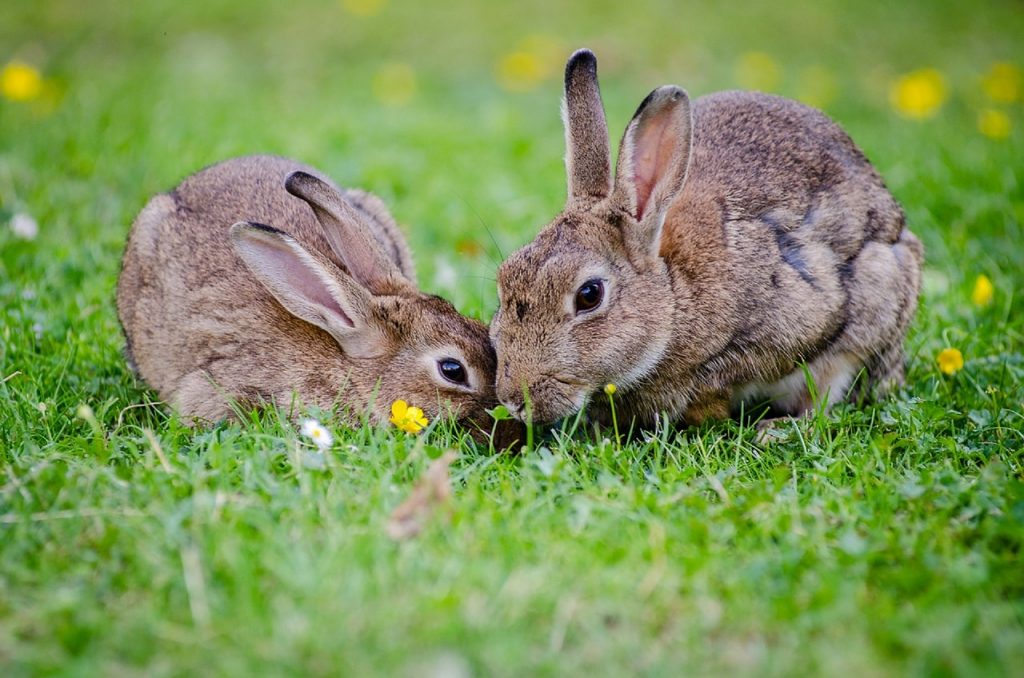
Best starter fertilizer for grass. Growing grass commonly does not have to be taking a great physical amount of effort. However, developing a new grass lawn requires a known level of diligence to provide new grass seed with the best chance to germinate and then thrive well!
It is crucial for its roots to grow, extending down below into the soil. If it is deep enough, these new grass will form a well-established lawn.
The key benefit of a well-established lawn is by using the best fertilizer for new grass and more resistant to inclement conditions!
Poaceae or Gramineae is a large family of monocotyledonous flowering plants also known as grasses, or commonly referred to as grass.
The difference between lawn starter fertilizer and regular fertilizer
New grass has unique needs to grow and establish in the beginning. New grass must get the much nutrients they need from fertilizer.
A lot of people do the equivalent of feeding a new grass a regular fertilizer they try to fertilize their new grass. People use regular fertilizer instead of starter lawn fertilizer.
Even though both can give grass with valuable nutrients, but they are not interchangeable. The required nutrients are different, and the grass needs different nutrients at various stages of their life.
A regular fertilizer consists of a blend of nitrogen, potassium and phosphorus (NPK formulation) at a 1-2-1 ratio. This formulation is excellent for mature grass, but not suitable for new seedlings.
The ideal and main ingredient in lawn starter fertilizer is phosphorous. This formulation gives grass seeds the best chance to germinate and sprout.
Many lawn starter fertilizers also contain quick-release nitrogen to aid in germination and the growth of the seed. They are specially formulated for seedlings.
What is the best new grass fertilizer?
The best fertilizer for new lawns should be closer to a 21 – 22 – 4 NPK formulation. Those nutrients should be quick-release, so your seedlings get the help immediately to establish itself.
Potash commonly found in soil is a source of potassium, so it is typical for the levels of potassium in fertilizer to be very low. Find fertilizer for new grass that read starter lawn fertilizer on the label.
Top 10 best starter fertilizer for grass comparison chart
[wptb id="5875" not found ]List of the best new grass fertilizer
1. Scotts Starter Fertilizer For Grass – Scotts Turf Builder Starter Food for New Grass
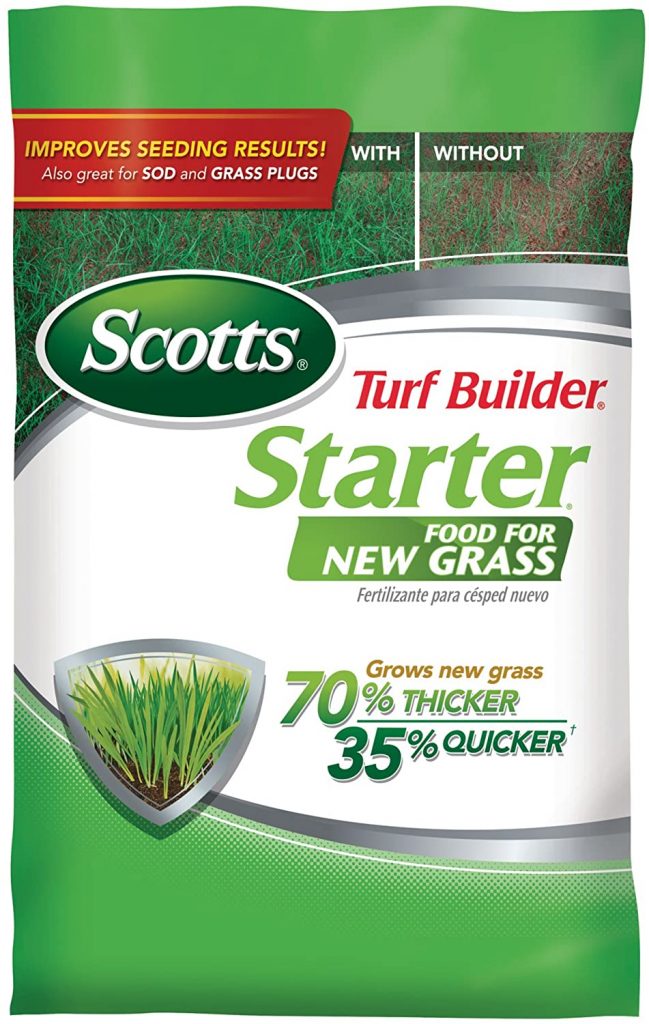
With this Scotts Starter Fertilizer For Grass – Turf Builder Starter Food for New Grass, you will provide your new grass with a blend of nutrients. The new grass will go with a quick start.
This Scotts Starter fertilizer for grass will promote better blade development and faster root development. The 24-25-4 NPK formulation is an ideal nutrient balance for your new developing lawn.
The formulation will enhance seeding results and being great for grass plugs and sod. After the application of the Scotts Starter fertilizer for grass, you will notice that the new grass grows 70% thicker than unfed new grass. The result is 35% quicker compared to unfed new grass.
This Scotts Starter fertilizer for grass product is safe to use on any grass type, whether you are reseeding grass, installing sod, planting new grass, starting a new lawn, installing grass plug, or sprigs.
After you have planted your new grass, it is crucial to ensure your water well every morning to keep the soil moist. Ensure to continue feeding your new lawn to maintain a green and thick look. When the new grass reaches three inches, start to mow the area.
2. Scotts Starter Turf Builder Starter Food for New Grass Plus Weed Preventer
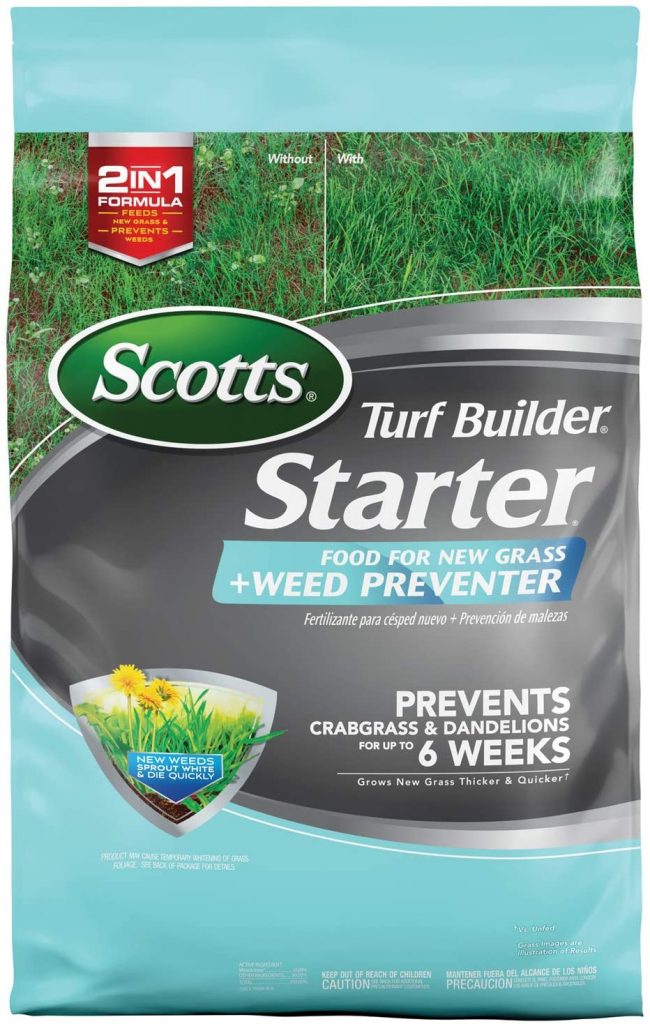
With this Scotts Starter fertilizer for new grass, you do not need to take time to get your lawn moving in the right direction. This Scotts Starter fertilizer for grass is formulated as a 2-in-1 formula that feeds new grass with nutrients and provides those new grass a quick start.
The formulation feeds the grass as well as preventing dandelions and crabgrass for up to 45 days. Your new grass will grow thicker and quicker compared to unfed grass.
Weeds die and sprout white fast, but it will not harm your new grass. It is an excellent choice for sod and grass plugs.
Scotts Starter fertilizer for grass will feed new grass after winter. Unfortunately, it is not for Dichondra or Bentgrass lawns.
3. Jonathan Green New Seeding Lawn Starter Fertilizer
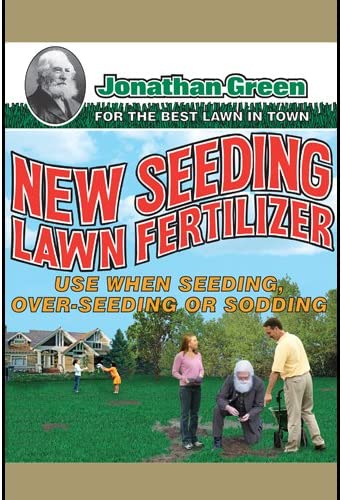
Jonathan Green Starter Fertilizer manufactures this fertilizer with 12-18-8 NPK formulation. You can apply this fertilizer for sodding, overseeding, or seeding a new grass lawn.
It contains a high amount of phosphorous formula that helps build a strong and healthy root system. You will notice that after the application of this fertilizer, the new grass will start faster, thicker grass and greener lawn.
This fertilizer consists of 1% iron that will help your new grass deep greening color. The ingredients also contain 30% slow release Nitrogen for continuous supply of nitrogen.
4. GreenView Starter Fertilizer

This GreenView Starter Fertilizer product is an excellent choice for new grass lawn areas. It provides the essential nutrients for the new grass seedlings required to thrive.
The fertilizer gives enough nitrogen with a controlled release to get a better vitality and growth. The main ingredient of this fertilizer is a high concentration of phosphorus.
Its phosphorus increases the chance of the grass seeds and seedlings for germination success.
The importance of an early stage of growth can be maximized in the fall or spring to develop a new grass lawn. This product keeps new grass having food during its early stages of growth and grow roots.
Starter fertilizer like this fertilizer can be applied before or after seeding. The NPK formulation is 10-18-10 that provides immediate release and time-released nitrogen.
It will provide continuous feeding for up to 60 days. For one bag, you can cover up to 15,000 square feet.
5. Espoma LS36 Organic Lawn Starter Seed and Sod Food Starter Fertilizer
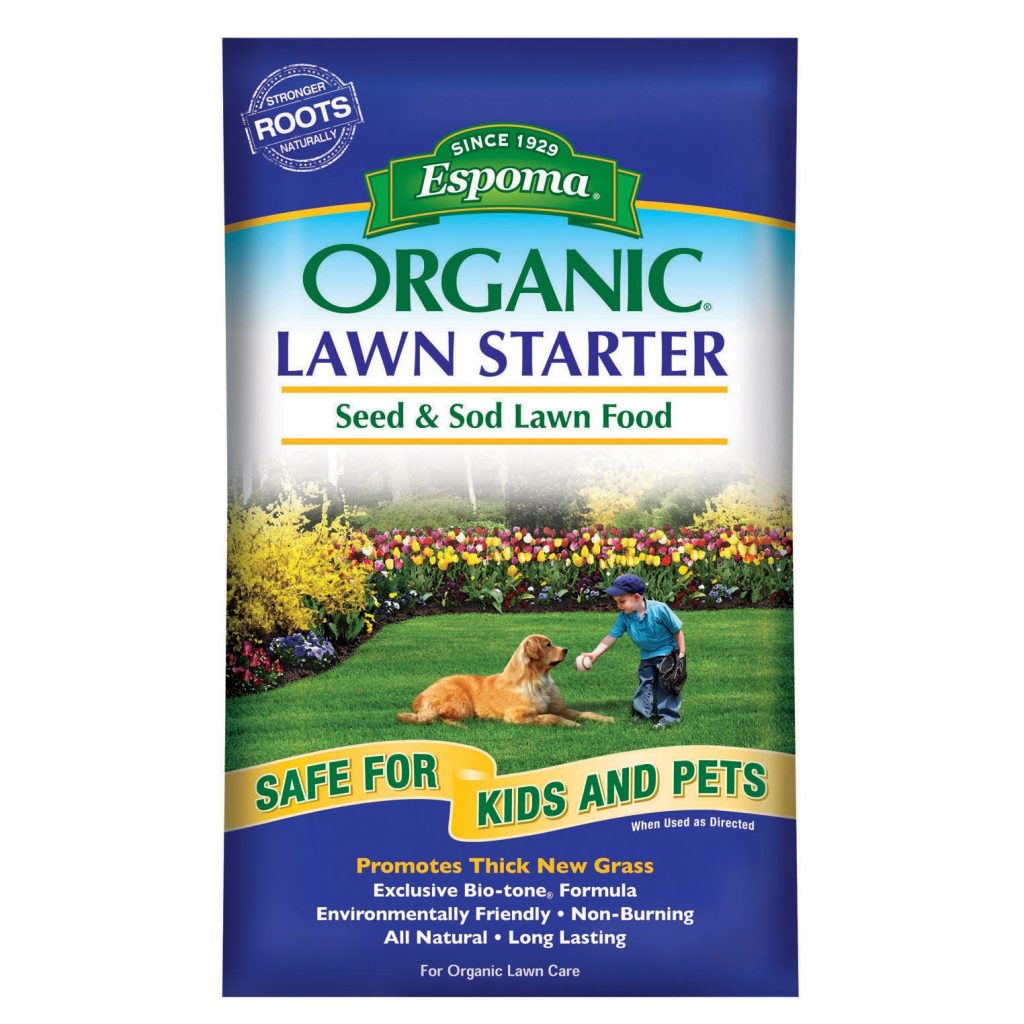
This fertilizer is an organic grass lawn starter, and premium lawn food with bio-tone microbes is a premium lawn food. You can apply this product to develop new lawns from sod or seed.
The ingredient is a higher amount in phosphorus which help grow healthy and robust root systems. The phosphorus stimulates and strengthens the roots as well as producing thick new grass.
This organic lawn starter food breaks down slowly to provide a long-lasting and safe food reservoir all season. It will not burn the new grass.
6. Ferti Lome New Lawn Starter Fertilizer 19-13-7
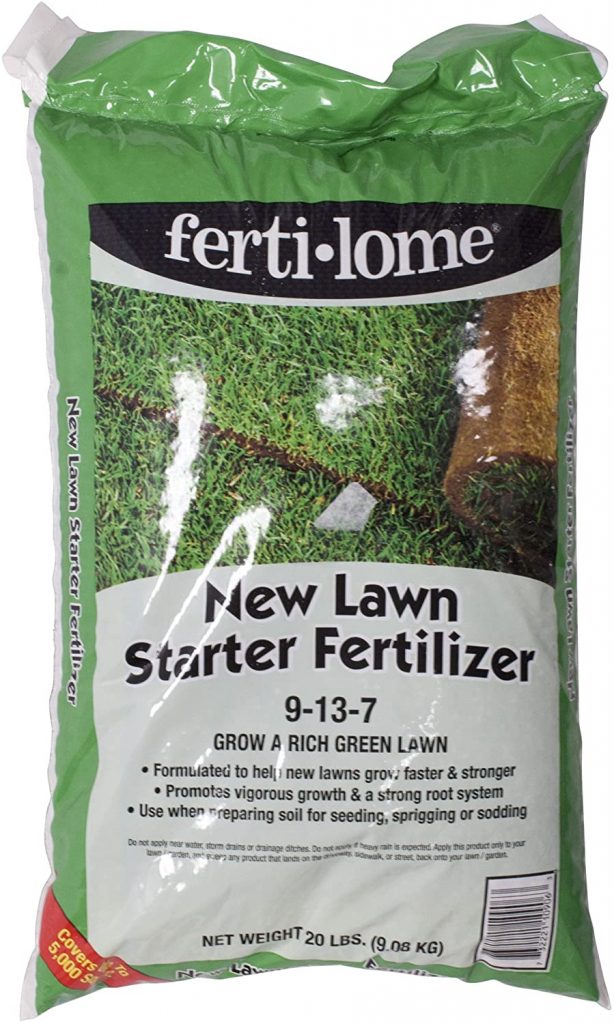
This fertilizer product is an excellent choice to start a new grass lawn. The Ferti-Lome New Lawn Starter Fertilizer 9-13-7 helps you improve your new grass to develop healthy root systems faster and greener color.
Apply the fertilizer for starter lawn with your grass seed before or after planting grass seed. You can also apply this fertilizer for new sod that ensure it establishes itself.
According to many verified purchasers, this fertilizer worked great, and they saw an overnight improvement in struggling new grass seed.
When to fertilize new grass after seeding?
Once your grass has been seeded, and you should wait before re-fertilizing your new grass. Wait for at least one month, and you could also wait for two months.
If you re-fertilize too early, the needed nutrients will not be absorbed by the roots well. Over-fertilizing can drain more nutrients from the soil. The result is a deficiency of nutrients.
You can follow a regular annual fertilization schedule below:
1. In the summer
You can feed your new grass a slow-release nitrogen fertilizer in forty-five to sixty days intervals all season. Applying slow-release nitrogen will benefit your new lawn without propelling uncontrolled growth that can obligate you to mow the new grass more frequently.
2. Fall fertilization
The benefit of fall fertilization is that the practice boosts lawn density. This fertilization in the fall helps to protect the new grass against winter weeds.
Fall fertilization also encourages your lawn color likely to be better in the fall if you provide your grass added food and nutrients. By fertilizing in the fall, will help in the recovery of your new grass in the spring.
Apply a fertilizer with modest nitrogen rates such as one pound or less per 1,000 square feet to avoid carry-over. Apply fertilizer before the first frost of the season.
3. Spring fertilization
You fertilize in the spring sometime between the beginning of March and the middle of April. Pay proper attention to your new grass, as it should start to turn green.
The new grass needs mowing at least twice before the fertilization in the spring.
How often to apply starter fertilizer on new grass?
You do not reapply your starter fertilizer after the sod is installed and the grass starts growing. Starter fertilizer should only be used before a new lawn is installed.
Reapplying fertilizer can harm and damage your new grass lawn if you use it later. You do it only once.
For later fertilization, you need to switch to more appropriate food. You fertilize your new grass with regular fertilizer that is appropriate for the makeup of your soil.
How to seed new lawn
Frequently ask question
How long does starter fertilizer last?
The starter lawn fertilizer makes a rich soil environment that keep up the seedlings for at least sixty days. It is crucial that you wait to fertilize your new grass until thirty days to sixty days have passed.
Can fertilizer and grass seed be mixed?
Applying a starter lawn fertilizer with seed will ensure the emerging grass stalks get the nutrients they require to jump-start their growth. It is not recommended to apply the fertilizer and seed together.
Does starter lawn fertilizer need to be watered in?
It is essential to water-in with water. A standard fertilizer can be used to wet or dry grass and can be watered in right away, starter lawn fertilizer should not be watered in for 24 hours after application.
Why is the new grass seed not growing?
All new grass seed needs sunlight to grow. If the air temperature and the soil are too cold, new grass may take a longer time to germinate. If there is not enough moisture in the soil, the germination will be delayed.
What is the standard amount of starter fertilizer?
If you do not apply a soil test to discover how much starter fertilizer for the new lawn might burn the grass. It is recommended that you apply a starter fertilizer at 0.5 to 1 pound nitrogen per 1,000 square feet of a grass lawn.
If you apply amounts over 1.5 pounds, you can burn the new grass and result in inferior growth. Application of your starter fertilizer is not a substitute for the potash and phosphate required on your soil test report.
When or where you should not apply a starter fertilizer?
When you apply one or two inches of good quality compost in some cases, it will provide more than enough Phosphorus and Nitrogen for optimum growth before establishing new grass. This is undoubtedly the case with manure-based or bio-solids composts that consists of Nitrogen and Phosphorus.
The compost application makes a starter fertilizer is not needed. It is wise not to apply starter fertilizer in lawns where you can not control runoff.
Nitrogen and Phosphorus can cause environmental concerns that some regions in the U.S. have imposed some regulations on starter fertilizer use. Nitrogen plays a crucial role in lawn low on organic matter.
When you address soils with organic materials, Nitrogen is always needed for rapid establishment. An application of one pound quick-release nitrogen per 1,000 square feet will speed up seedling new grass development.
Phosphorus is usually included in starter fertilizer primarily to improve root development. Developing seedlings growing in compact soils during winter months are to benefit more from Phosphorus in starter fertilizer.
How to apply starter fertilizer?
The first thing to do is to conduct a soil test. After you discover the soil test, apply starter fertilizer for your soil, and understand the needed amounts.
Pour the needed amount into a fertilizer spreader and apply the starter fertilizer evenly over the new grass. Once the starter fertilizer is applied, work the fertilizer for grass four to six inches into the soil if you are planting sod after the application.
Spread the starter fertilizer product over the soil and water well. Starter fertilizer for new grass sod is an advantage to its application to promote the healthiest and fastest growth.
Too much starter fertilizer for your developing grass lawn can burn the grass. Use the starter fertilizer properly, according to the soil test, so that you can enjoy the feel of your healthy lawn.
Can you use a starter fertilizer for established grass?
No, you can not use a starter fertilizer for established grass. For established grass, it is better to apply a well-balanced fertilizer for grass that is established.
A starter fertilizer does not contain all the required nutrients for growth and good health. It will not harm the grass, but not enough, the needed nutrients for continued lawn maintenance.